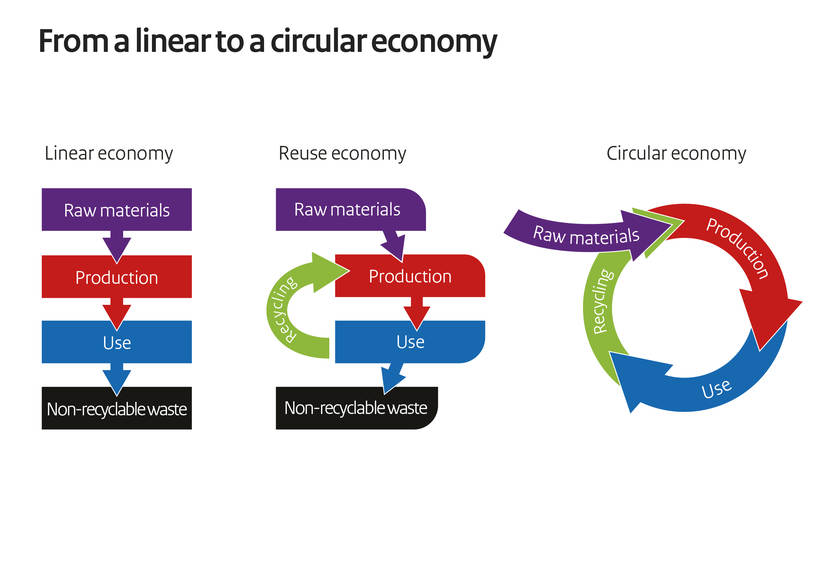A circular economy is an economic system that circulates resources without producing waste which have been discarded in the conventional linear economy system of “Take”, “Make” and “Waste.”
The circular economy has gained worldwide attention as a new economic model for decoupling economic growth from environmental impacts and achieving a sustainable society. It has been at the heart of economic policies in the EU, including the adoption of the “Circular Economy Package” in December 2015.
The circular economy is the matter of not only “Planet” and “Profit” but also “People”. We have to consider how to make a inclusive transition towards a circular economy, including creating new jobs and reskilling for those who are exposed to unemployment risks along the transition to the circular economy.
Achieving the circular economy requires collaboration among a wide range of industries, including manufacturers, retailers, collection and recycling companies. Cooperation from consumers is also essential in collection and recycling. Promoting the circular economy are expected to stimulate various types of cross-industrial and cross-sectoral collaborations, which will bring back connections to people and lead a thriving community.


